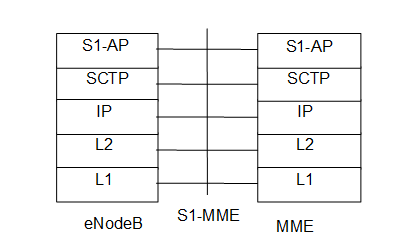S1AP provides the signalling service between E-UTRAN and the evolved packet core (EPC) and has following functions:

E-RAB management function: This overall functionality is responsible for setting up, modifying and releasing E-RABs, which are triggered by the MME The release of E-RABs may be triggered by the eNB as well.
Initial Context Transfer function: This functionality is used to establish an S1UE context in the eNB, to setup the default IP connectivity, to setup one or more E-RAB(s) if requested by the MME, and to transfer NAS signalling related information to the eNB if needed.
UE Capability Info Indication function: This functionality is used to provide the UE Capability Info when received from the UE to the MME.
Mobility Functions: in order to enable
- a change of eNBs within SAE/LTE (Inter MME/Serving SAE-GW Handovers) via the S1 interface (with EPC involvement).
- a change of RAN nodes between different RATs (Inter-3GPP-RAT Handovers) via the S1 interface (with EPC involvement).
- Paging: This functionality provides the EPC the capability to page the UE.
S1 interface management functions: S1 interface management functions comprise the
- Reset functionality to ensure a well defined initialization on the S1 interface.
- Error Indication functionality to allow a proper error reporting/handling in cases where no failure messages are defined.
- Overload function to indicate the load situation in the control plane of the S1 interface.
- Load balancing function to ensure equally loaded MMEs within an MME pool area
- S1 Setup functionality for initial S1 interface setup for providing configuration information
- eNB and MME Configuration Update functions are to update application level configuration data needed for the eNB and MME to interoperate correctly on the S1 interface.
NAS Signalling transport function: NAS Signalling transport function between the UE and the MME is used:
- to transfer NAS signalling related information and to establish the S1 UE context in the eNB.
- to transfer NAS signalling related information when the S1 UE context in the eNB is already established.
S1 UE context Release function: This functionality is responsible to manage the release of UE specific context in the eNB and the MME.
UE Context Modification function: This functionality allows to modify the established UE Context partly.
Status Transfer: This functionality transfers PDCP SN Status information from source eNB to target eNB in support of in-sequence delivery and duplication avoidance for intra LTE handover.
Trace function: This functionality is to control a trace recording for a UE in ECM_CONNECTED.
Location Reporting: This functionality allows MME to be aware of the UE’s current location.
LPPa Signalling transport: This functionality transfers LPPa messages between eNB and E-SMLC over the S1 interface.
S1 CDMA2000 Tunneling function: This functionality is to carry CDMA2000 signalling between UE and CDMA2000 RAT over the S1 Interface.
Warning message transmission function: This functionality provides the means to start and overwrite the broadcasting of warning message.
RAN Information Management (RIM) function: This functionality allows the request and transfer of RAN system information (e.g. GERAN system information) between two RAN nodes via the core network.
Configuration Transfer function: This functionality allows the request and transfer of RAN configuration information (e.g. SON information) between two RAN nodes via the core network.
